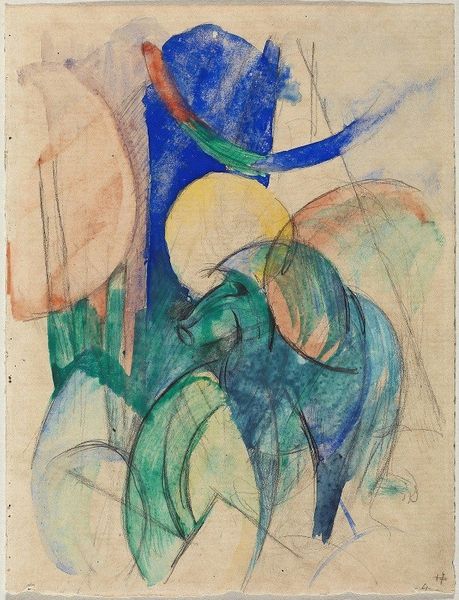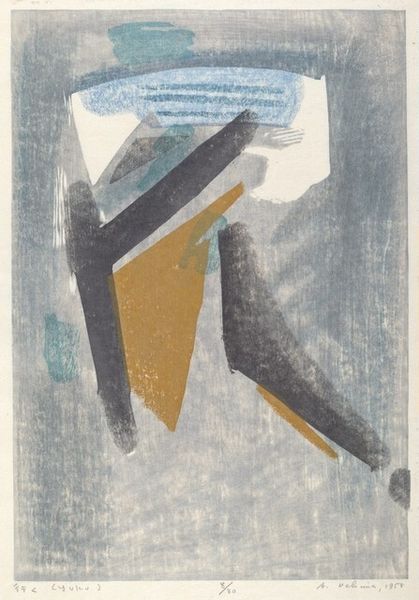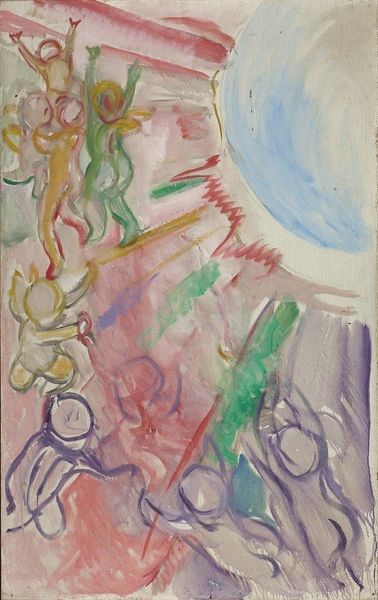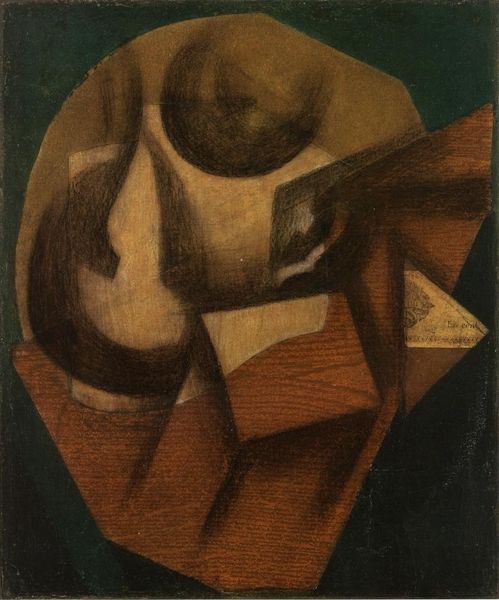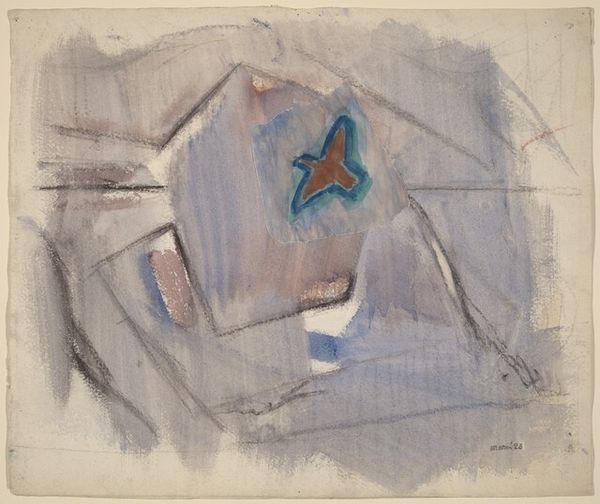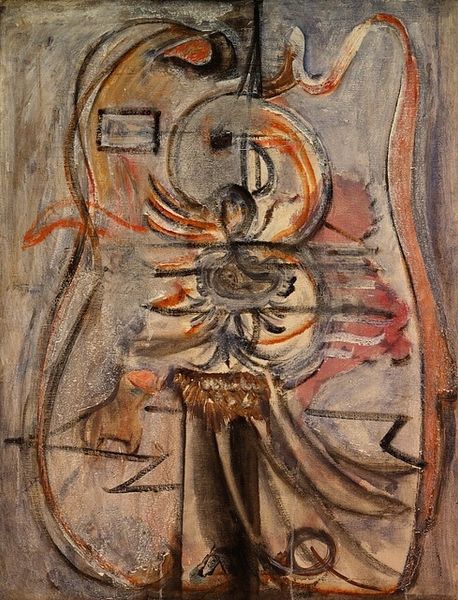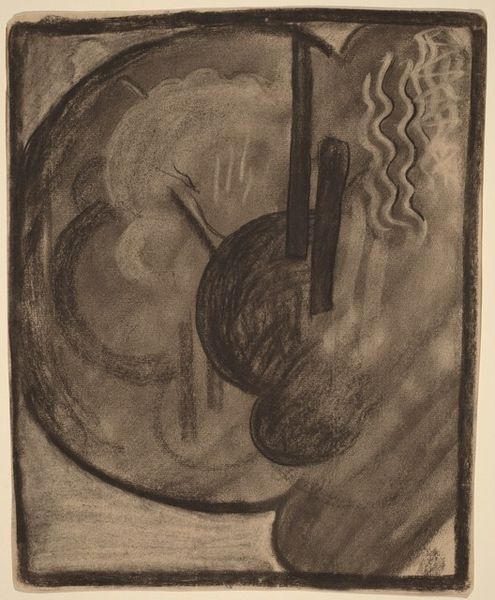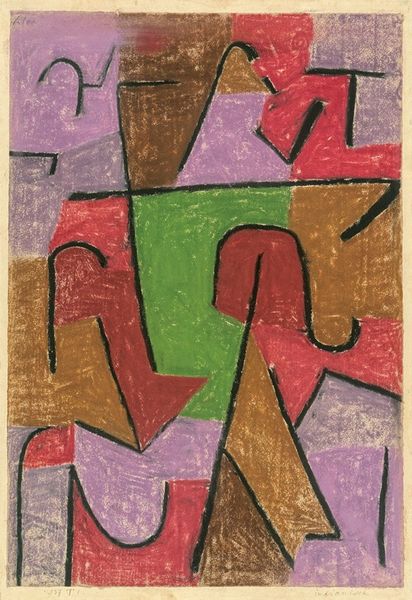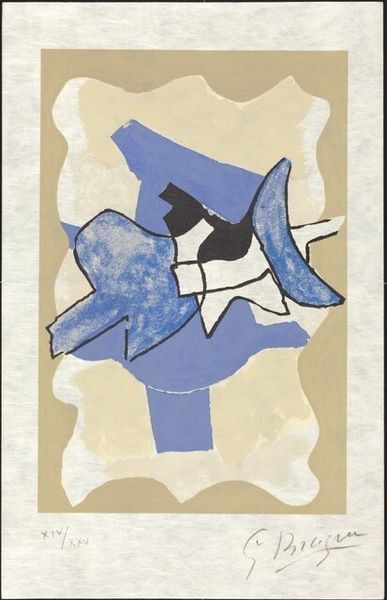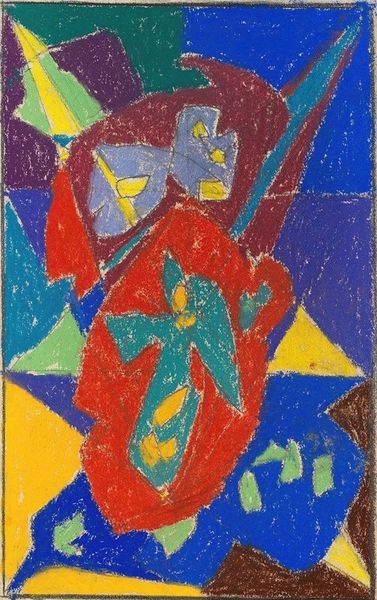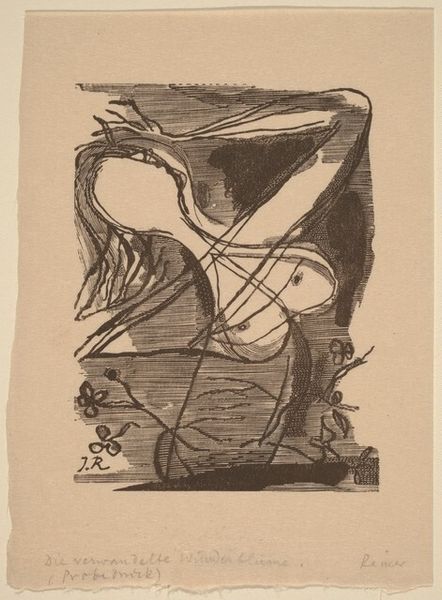
painting, watercolor
#
painting
#
landscape
#
german-expressionism
#
figuration
#
abstract
#
watercolor
#
expressionism
#
abstraction
#
watercolor
Copyright: Public Domain: Artvee
Curator: I like the painting Two Blue Horses by Franz Marc. Dating to 1913, the medium seems to be watercolor. I'm drawn to the colors and the almost dreamlike quality. How do you interpret this work, keeping in mind its production context? Editor: What immediately strikes me is the application of watercolor on what looks like very textured paper. The colors bleed and blend in ways that emphasize the materiality of the painting. Thinking about the period – pre-WWI Europe – can we consider this blending a symbolic expression tied to the rapidly dissolving social order? Curator: That's an interesting observation. We know Marc was part of Der Blaue Reiter, a group deeply invested in spirituality and abstraction. Instead of simply mimicking the outer world, how might he use the materiality of paint – its flow, texture, and inherent qualities – to manifest his internal visions, thus critiquing traditional modes of representation? Editor: So, rather than seeing this simply as an idyllic landscape, the blending of colors becomes an active agent, disrupting any easy interpretation and maybe hinting at broader societal upheavals? It almost seems like a deliberate sabotage of "realism". Curator: Precisely! The choice of watercolor, traditionally viewed as preliminary, subverts notions of high art, shifting focus towards process and artistic labour itself. Considering the intense industrialization and burgeoning capitalist system during Marc’s time, how do the gestural qualities and vibrant colours provide not only escapism, but a radical reimagining through artistic production? Editor: So it's not just "pretty colors," but a deliberate choice linked to materials, labour, and even social critique. The fragility of watercolour contrasts starkly with the monumental themes, it is all very poignant. I see now, it offers more than just an escape, but a new critical awareness. Curator: Exactly, it demonstrates how art’s means of production aren't neutral. It gives a material shape to complex ideas, enriching how we understand not only the painting but its historical period too.
Comments
No comments
Be the first to comment and join the conversation on the ultimate creative platform.
